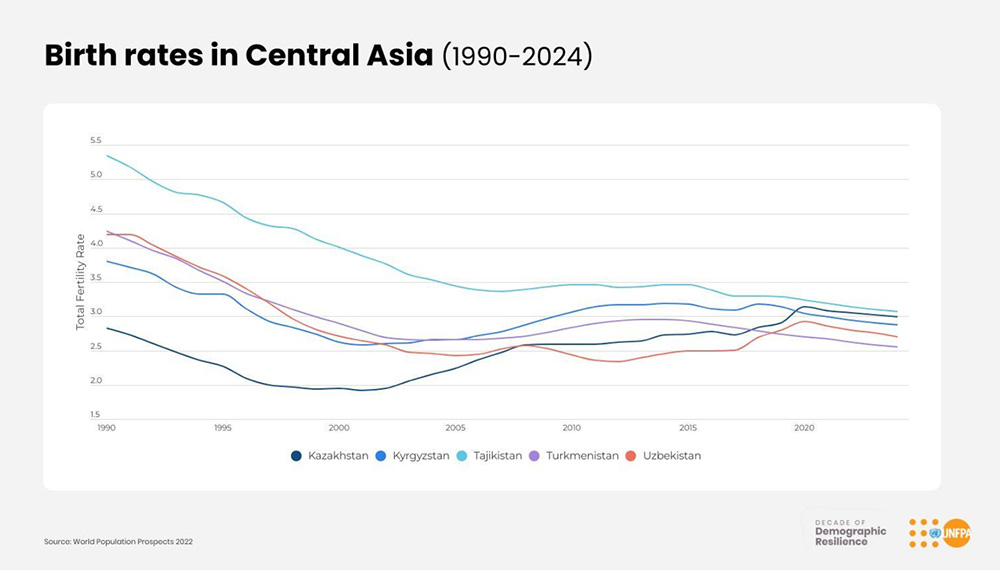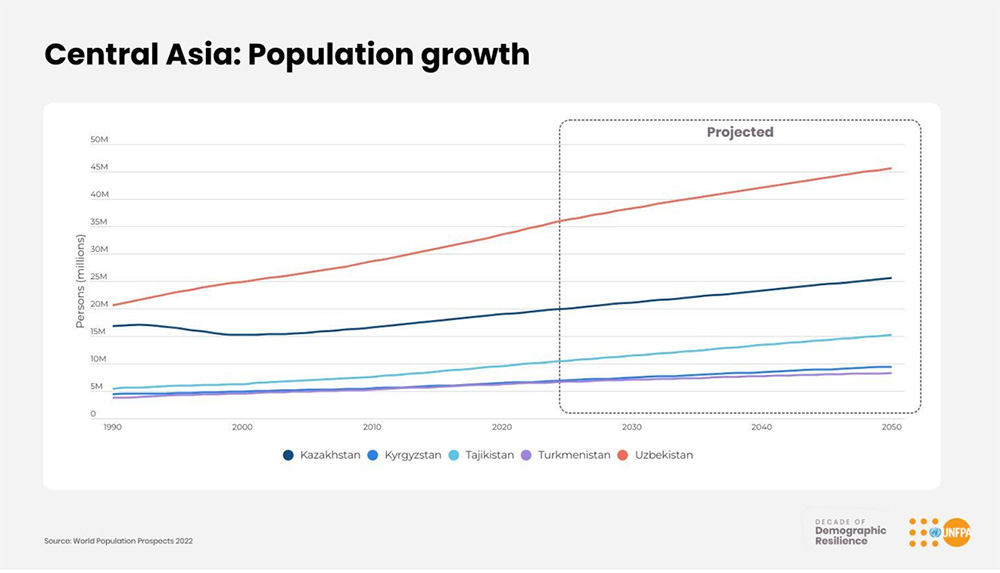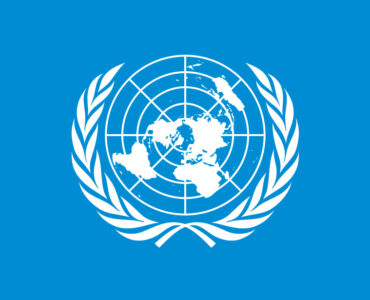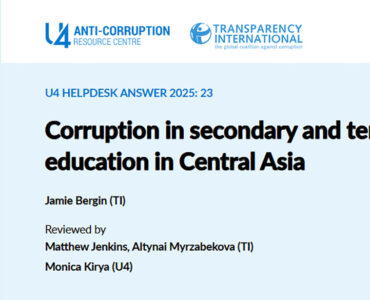Turkmenistan faces falling birth rates, but the UNFPA suggests this is not necessarily a bad thing. The key lies in responding to demographic shifts by respecting rights, expanding choices, and building resilience.
Birth rates have dropped in Central Asia overtime. For example, birth rates in Turkmenistan have decreased from 4.3 in 1990 to almost 2.5 in 2024. It nearly halved over the course of 34 years. Nevertheless, Central Asia has relatively high fertility rates compared to Eastern Europe and strong population growth. It has a young population, with between 43% – 54% of the population under 25 years old.
While Turkmenistan has a growing population, it is growing somewhat slower compared to other countries in Central Asia. The increase in population numbers is inhibited by low life expectancy (around 70 years) and high levels of outmigration. An estimated one million Turkmens reside in Türkiye alone with Turkmens being the third largest irregular migrants overstaying their visas.
According to the UNFPA, to achieve demographic resilience countries like Turkmenistan should adopt solutions that are comprehensive, based on data and consistent with human rights and gender equality. The solutions work best when they are people-centered, human capital-oriented and expand people’s choices.
A key challenge for Turkmenistan, and the rest of Central Asia, is how best to utilize the enormous potential of its youthful population. According to UNFPA, it requires growth-oriented economic policies and investments in infrastructure, technology and human capital. There are a number of things the Turkmen government can do to strengthen human capital including:
Donate to support Turkmen analysts, researchers and writers to produce factual, constructive and progressive content in their efforts to educate the public of Turkmenistan.
SUPPORT OUR WORK- promoting gender-responsive family policies;
- improving access to healthcare;
- expanding access to family planning;
- addressing gender inequalities like discrimination, exclusion and violence;
- building knowledge and skills among young people;
- avoiding teenage pregnancy.
The UNFPA warns against focusing solely on increasing fertility rates as it can lead to putting blame and pressure on women. Instead, governments should address the underlying factors that hinder family formation and drive outmigration, such as poor education, unaffordable housing, unstable jobs, political instability and corruption.
According to the UNFPA “countries can thrive even when birth rates are low. But this requires sustained investments in human capital and dismantling the many barriers women and other marginalized groups still face in fully participating in the economy and public life”.
It will be essential for countries like Turkmenistan to ensure its population is healthy, well-educated, empowered and employed to accelerate economic and social development.
Photo Source: UNFPA Turkmenistan








